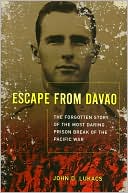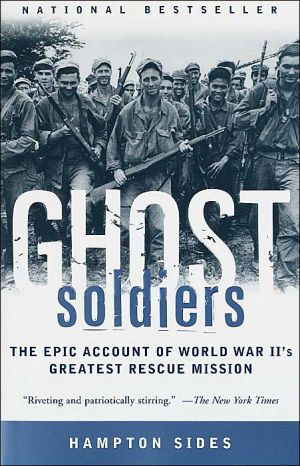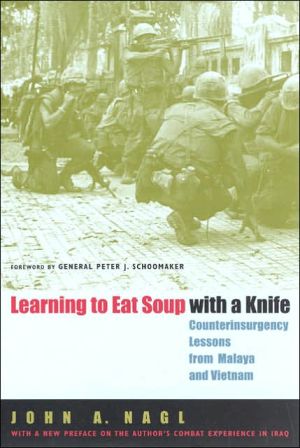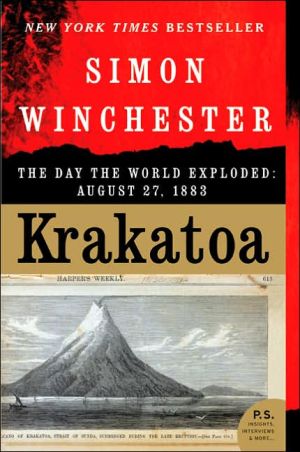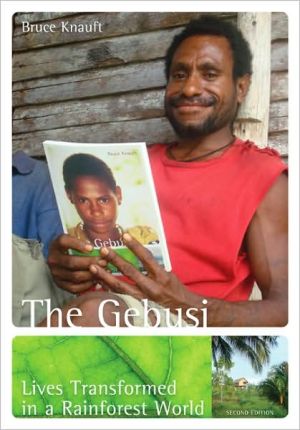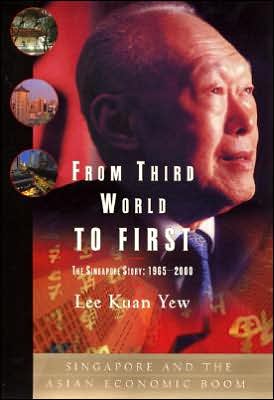"If You Leave Us Here, We Will Die": How Genocide Was Stopped in East Timor
This is a book about a terrible spate of mass violence. It is also about a rare success in bringing such violence to an end. "If You Leave Us Here, We Will Die" tells the story of East Timor, a half-island that suffered genocide after Indonesia invaded in 1975, and which was again laid to waste after the population voted for independence from Indonesia in 1999. Before international forces intervened, more than half the population had been displaced and 1,500 people killed. Geoffrey Robinson,...
Search in google:
"Those of us with a special interest in the final frenzy of the Indonesian occupation of East Timor will be deeply grateful to Geoffrey Robinson for the narrative power and depth of insight that makes his book the outstanding treatment of these events. But the value of his book goes far beyond that: as a historian who has thought deeply about political violence, as a human rights practitioner familiar with the ways of states and institutions that perpetrate and condone massive human rights abuses, and as a reflective participant in the UN mission that oversaw the referendum on East Timor's independence, Robinson is uniquely qualified to bring out the wider meanings of what happened in East Timor in 1999, and triumphantly succeeds in doing so."--Anthony Goldstone, coeditor of Chega!: Final Report of the East Timor Commission for Reception, Truth, and Reconciliation"In this outstanding book, Robinson provides an authoritative and gripping account of the violence visited upon East Timor by the Indonesian Armed Forces that is unparalleled in documentation, sophistication, and insight. His appraisal of the conditions enabling the belated United Nations intervention in East Timor is likewise unrivalled in its combination of scholarly analysis and insider insights."--John Sidel, London School of Economics and Political Science"This is the single most important book about the complex and dramatic events of 1999 in East Timor. Combining a scholarly analysis of violence with first-person reporting, it provides a profound and nuanced understanding of recent East Timorese history."--John Roosa, University of British Columbia Publishers Weekly In this intimate, informed account, historian Robinson (The Dark Side of Paradise: Political Violence in Bali), examines the tumultuous events surrounding East Timor's 1999 attempt to gain independence from Indonesia. With expertise and an insider's perspective-a principal researcher for Amnesty International in the 1990s, Robinson joined the UN mission overseeing East Timor's independence referendum-the author offers rare insight into the country's internal turmoil. Particularly riveting are Robinson's descriptions of the days preceding the historic vote to separate from Indonesia: "dressed in their Sunday best, some East Timorese left home in the middle of the night to reach the polling station by dawn." The importance of that vote, in which "98.6 percent of those who had registered cast ballots," is hard to overstate; just hours after voting ended, however, pro-Indonesian militia groups erupted in a violent backlash that would kill approximately 1,500 civilians and send 400,000 fleeing the country. Despite the overwhelming brutality of the story, and a bleak assessment of actions from the UN and international community (as much a part of the problem as the solution), Robinson manages to cap his detailed report with a hopeful note.
"IF YOU LEAVE US HERE, WE WILL DIE"\ HOW GENOCIDE WAS STOPPED IN EAST TIMOR \ \ By GEOFFREY ROBINSON \ PRINCETON UNIVERSITY PRESS\ Copyright © 2009 Princeton University Press\ All right reserved.\ ISBN: 978-0-691-13536-6 \ \ \ Chapter One\ INTRODUCTION \ Nineteen ninety-nine was a bad year in East Timor. Between January and late October, at least fifteen hundred civilians were killed among a total population of well under a million. Some of the victims were shot dead; others were decapitated, disemboweled, or hacked to death with machetes. Many were beaten or tortured, while women and girls were singled out for rape and other crimes of sexual violence. The vast majority of the victims were real or suspected supporters of East Timor's independence from Indonesia, including Catholic clergy, local UN staff, and political activists. The perpetrators were overwhelmingly members of armed East Timorese militia groups and their Indonesian army patrons.\ The worst of the violence followed the announcement, on September 4, that 78.5 percent of the population had voted for independence in a UN-supervised referendum held just days earlier. Twenty-four years after invading and occupying the tiny former Portuguese colony, the Indonesian army and its local allies were not about to let it go without a fight. Over the next few weeks, the capital Dili along with many other towns and villages were burned to the ground. Warehouses, shops, and homes were looted, their contents loaded onto trucks and ships, and then taken to Indonesia. The systematic violence also fueled the displacement of the population on a massive scale. By the time it ended, at least four hundred thousand people had been forced to flee their homes, and an estimated 70 percent of the country's infrastructure had been burned or destroyed. For ten days in September, at the height of the violence, the UN compound in Dili where I worked became a place of refuge for some two thousand East Timorese and UN staff, and partly for that reason, came under siege.\ The swiftness with which the violence spread as well as its apparently orchestrated character led some observers to fear an impending genocide. That was not an idle fear. In the late 1970s, at least a hundred thousand East Timorese, and perhaps twice that number, had died as a direct consequence of the Indonesian invasion and occupation. Yet even as the possibility of a second genocide was being discussed, the tide suddenly turned. In response to mounting public outrage, in mid-September the United States and other key governments finally took steps to rein in the Indonesian army and its militia proxies, cutting military ties to Indonesia and threatening to suspend economic aid. Under this unprecedented pressure, Indonesian authorities agreed to accept international assistance to restore order. Then, in another unusual move, the UN Security Council authorized the deployment of a multinational military force under Chapter VII of the UN Charter. That force landed about one week later, and within a week or two of its deployment, the worst of the violence had stopped and the distribution of humanitarian assistance had begun.\ This book tells the story of that terrible yet strangely uplifting year. It is a history not only of mass political violence that threatened to degenerate into genocide but also of a rare success in bringing such violence to an end. Viewing the events of 1999 against East Timor's longer history, this book examines the structural origins and logic of the violence, the historical conditions that shaped and ended it, and the related questions of personal and institutional responsibility. More specifically, it asks: Why did the violence of 1999 occur as and when it did? What best explains the central part played by East Timorese militias? What finally brought about the surprising international military intervention of late September? And finally, who was responsible for the violence, and what efforts have been or might yet be made to ensure that they are brought to justice?\ The answers to these questions matter because they lie at the heart of the pressing moral, legal, and political problems with which East Timorese continue to grapple. They also matter because the story of East Timor is in some respects emblematic of many of the most important political and legal developments of the final decades of the twentieth century. Despite its small size, East Timor has lived in the crosshairs of the central ideological and geopolitical challenges of each of the last several decades, including the struggle for decolonization, the tragic consequences of cold war "realism," the problems of militarism and extreme nationalism, debates over humanitarian intervention and UN trusteeship, and the emergence of new regimes of international humanitarian law and justice. For Americans, moreover, the violence in East Timor has a special significance because of the U.S. government's historical complicity in it. Against the backdrop of the war in Iraq and the wider "war on terror," a discussion of that history may help citizens and leaders alike as they struggle to make sense of their nation's place in the world, and the political and moral foundations of its public life.\ Without suggesting that East Timor's experience is typical, I hope that this account may also contribute to broader scholarly and public debates about political violence, genocide, international humanitarian intervention, and transitional justice. More specifically, I believe it may shed new light on some of the following questions: Under what historical conditions are crimes against humanity and genocide most likely to occur, and under what conditions can they be prevented or stopped? Is armed humanitarian intervention an effective method of preventing mass violence, or stopping such violence once it has started? What role do human rights organizations, religious institutions, the media, and individuals play in the genesis and prevention of genocide? And is it possible to balance the pursuit of justice and reconciliation in a society that has experienced widespread and systematic violence?\ My interest in the subject of this book is partly intellectual and partly personal. Most of my work as a scholar over the past twenty years or so has been devoted to understanding the history and dynamics of political violence, particularly in Indonesia and East Timor. Over the same period, I have been directly engaged in efforts to end such violence and to protect basic human rights in those places, among others. For several years in the late 1980s and early 1990s, I worked as the principal researcher for Indonesia and East Timor at Amnesty International's headquarters in London. From that vantage point, I became familiar not only with the seemingly intractable problem of violence in East Timor and the unusual brutality of Indonesia's New Order regime but also with the extraordinary courage of those inside East Timor who were fighting for their rights and independence. So when the opportunity arose in early 1999 to serve with the UN mission overseeing the historic referendum on the country's future, it is safe to say that nothing could have kept me from going. But if I felt honored to be part of that process, and if I felt reasonably well equipped to do the job, I was not fully prepared for the complexity or the sheer horror of what I witnessed there. That experience, more than any other, drove me to write this account.\ In view of my somewhat unusual position as both a historian of and participant in the events described in this book, I have approached the subject from two complementary perspectives. On the one hand, in seeking to explain the origins and character of the violence, I have relied primarily on the methods and perspectives of the historian. Using a range of historical documents, interviews, and secondary sources, and informed by pertinent comparative and theoretical literature, I do my best to locate the events of 1999 in a broader historical and analytic framework, paying special attention to the legacies of Portuguese and Indonesian rule and to shifts in the international political environment. On the other hand, in examining the logic of events in 1999, I provide a detailed portrait from the point of view of those who were directly involved. Relying primarily on firsthand observations and interviews conducted during and after 1999-as well as contemporary UN and Indonesian documents-I recount the actions and the apparent motives of militia members, soldiers, civilians, and UN officials, and explore the difficult moral and political dilemmas they faced. The book concludes with a discussion of the relevance of East Timor's experience for the larger debates to which I have referred.\ My involvement in these events has undoubtedly affected my interpretation of them, and the more general conclusions I draw. Indeed, some might say that it has interfered with my capacity for objectivity. That may well be the case. If it is, I hope that there may nevertheless be some value in this account, and that others may treat it as one of many possible perspectives on the violence and its wider significance.\ East Timor: A Brief History\ For roughly three centuries, East Timor was a colony of Portugal. While Portuguese colonial authorities liked to imagine that East Timorese welcomed their rule, the truth was that their compliance was secured only through a series of ruthless pacification campaigns in the late nineteenth and early twentieth centuries. Those campaigns deliberately pitted "loyal" chiefs (liurai) against rebellious ones, laying the groundwork for deep-seated enmity among East Timorese. The same may be said of the brief but bloody Japanese occupation (1942-45), in the course of which some forty thousand Timorese died. Nevertheless, largely because of the absence of any meaningful nationalist movement in East Timor at the time, the Portuguese managed to return without much difficulty after the war. As the rest of the colonized world fought for and won independence from European powers, East Timor remained under Portuguese rule, and lived more or less harmoniously with its immediate neighbor, Indonesia.\ That arrangement began to unravel in 1974 as Portugal, in the throes of its own momentous political transformation, set about to relinquish its colonies in Asia and Africa. Portuguese disengagement stimulated the growth of political parties in East Timor, including a social democratic party called Fretilin (Frente Revolucionária de Timor Leste Independente, or Revolutionary Front for an Independent East Timor), which advocated immediate independence, and a more conservative party, the UDT (União Democrática Timorense, or Timorese Democratic Union), which favored eventual independence but with continued ties to Portugal. Against that backdrop, Indonesia began to interfere in East Timorese politics by lending support to a small party called Apodeti (Associação Popular Democrática Timorense, or Timorese Popular Democratic Association), which advocated integration with Indonesia, and encouraging the UDT to fight against Fretilin. That meddling soon contributed to a growing hostility between Fretilin and the UDT, and to a coup by UDT forces in mid-August 1975. The UDT coup triggered a brief but intense civil war in which some two thousand Timorese died. Though Fretilin quickly emerged as the dominant party, it faced repeated cross-border attacks by Indonesia, and political sniping from both Apodeti and the UDT. Finally, anticipating a full-scale Indonesian invasion, in late November 1975 Fretilin declared East Timor's independence.\ That declaration was the final straw for Indonesia's President Suharto, an army general who had seized power in an anti-Communist coup in October 1965. In the weeks and months after that coup, military forces under Suharto organized the killing of as many as one million real or alleged members of the PKI (Partai Komunis Indonesia, or Indonesian Communist Party), a legal political party at the time. Another half a million people were imprisoned, the vast majority of them without charge or trial. Claiming that an independent East Timor posed a threat of Communist insurrection and political instability on its border, and with the tacit support of the United States and other major powers, in early December 1975 Indonesia launched its invasion of East Timor. The UN Security Council and General Assembly passed several resolutions condemning the invasion, and East Timorese resisted with a tenacity that surprised Indonesian military officers. Indonesia responded by declaring East Timor its twenty-seventh province and launching a major counterinsurgency war, which led to massive displacement, disease, and death. That military campaign and the humanitarian crisis that flowed from it were greeted by silence and inaction by powerful states, most notably by the United States, Australia, and the United Kingdom. By the late 1970s, human rights organizations estimated that at least a hundred thousand people had already died, many of them due to starvation and disease, but a substantial number by summary execution or as the result of torture. At least in the colloquial sense of the word-and arguably even by its strict legal definition-this was genocide. For the next twenty-four years, Indonesia faced continued military and political resistance from East Timorese, but steadfastly rejected any suggestion that it should withdraw. Still, events on the ground in East Timor, widening fissures in Suharto's sclerotic New Order regime, and a gathering storm of international protest began gradually to weaken Indonesia's position through the 1990s.\ The watershed event was the Santa Cruz massacre of November 12, 1991, in which as many as 270 East Timorese, most of them teenagers, were gunned down or beaten to death by Indonesian soldiers. Shocking video footage of the massacre was broadcast worldwide, prompting outrage and stimulating the formation of new East Timor support groups throughout the world. Under pressure from these groups and from international solidarity networks that had been forming since the invasion, as well as the media and the Catholic church, some Western governments voiced rare criticism of Indonesia and backed these with limited sanctions. A further critical development came in 1996 when two East Timorese, the international spokesperson for the resistance, José Ramos-Horta, and the bishop of Dili, Monsignor Carlos Filipe Ximenes Belo, were awarded the Nobel Prize for Peace. The Nobel Prize raised hopes for independence to unprecedented levels, and further increased the leverage of East Timor support groups and nongovernmental organizations (NGOs). Yet in spite of the widespread sympathy for the victims of human rights abuse, and the international legitimacy bestowed by the Nobel Prize, the prospects for East Timorese independence continued to appear bleak. Indonesian authorities were adamant that East Timor would remain a part of Indonesia, and key governments remained reluctant to criticize Indonesia, much less to insist on its withdrawal from East Timor.\ All of this began to change in May 1998, when a surge of prodemocracy protest in Indonesia, coupled with a serious financial crisis and rioting in major cities, forced President Suharto to step down after more than thirty years in office. In East Timor, thousands of people took to the streets to demonstrate in favor of independence and against a proposal for "special autonomy" under Indonesian rule that had begun to be discussed in the context of UN-sponsored talks in New York. As details of the special autonomy proposal were being finalized, reports began to trickle out of East Timor about the mobilization of militia groups dedicated to maintaining the tie with Indonesia. And when Indonesia's new president, B. J. Habibie, unexpectedly proposed in late January 1999 that the East Timorese should be given a chance to vote for or against special autonomy, the trickle became a flood. More than a dozen militia groups appeared in a matter of months.\ It was soon evident that these groups were involved in a coordinated campaign of terror against supporters of independence. In February and March 1999, dozens of people were reported to have been killed, some in gruesome ways, and tens of thousands were forced to flee, after which their homes were burned to the ground. Many of those who fled sought refuge in nearby churches or the residences of prominent citizens. It was against these people, and in these places of refuge, that some of the most egregious acts of militia violence were committed in April. Against this inauspicious backdrop, the United Nations brokered a set of agreements with Indonesia and Portugal to conduct a referendum on the special autonomy proposal. The May 5 Agreements, as they were known, called for a vote to be held sometime in August, just three months away. Regrettably, those agreements stipulated that security both before and after the popular consultation would be the responsibility of Indonesia, and that the United Nations Mission in East Timor (UNAMET) would be entirely unarmed. Despite well-founded concerns about that arrangement, the violence slowed somewhat with the arrival of UNAMET and other observers in May and June, lending some support to the view that the presence of hundreds of international observers would serve as an effective brake on the violence. Yet the violence continued in some form as the ballot day approached-and reached a terrible crescendo in the days and weeks after the results of the vote were announced in early September.\ (Continues...)\ \ \ \ \ Excerpted from "IF YOU LEAVE US HERE, WE WILL DIE" by GEOFFREY ROBINSON Copyright © 2009 by Princeton University Press. Excerpted by permission.\ All rights reserved. No part of this excerpt may be reproduced or reprinted without permission in writing from the publisher.\ Excerpts are provided by Dial-A-Book Inc. solely for the personal use of visitors to this web site. \ \
Preface ix List of Abbreviations xv CHAPTER ONE: INTRODUCTION 1 CHAPTER TWO: COLONIAL LEGACIES 21 CHAPTER THREE: INVASION AND GENOCIDE 40 CHAPTER FOUR: OCCUPATION AND RESISTANCE 66 CHAPTER FIVE: MOBILIZING THE MILITIAS 92 CHAPTER SIX: BEARING WITNESS--TEMPTING FATE 115 CHAPTER SEVEN: THE VOTE 139 CHAPTER EIGHT: A CAMPAIGN OF VIOLENCE 161 CHAPTER NINE: INTERVENTION 185 CHAPTER TEN: JUSTICE AND RECONCILIATION 205 CHAPTER ELEVEN: CONCLUSIONS 229 Notes 249 A Note on Sources 295 Bibliography 297 Index 313
\ Publishers WeeklyIn this intimate, informed account, historian Robinson (The Dark Side of Paradise: Political Violence in Bali), examines the tumultuous events surrounding East Timor's 1999 attempt to gain independence from Indonesia. With expertise and an insider's perspective-a principal researcher for Amnesty International in the 1990s, Robinson joined the UN mission overseeing East Timor's independence referendum-the author offers rare insight into the country's internal turmoil. Particularly riveting are Robinson's descriptions of the days preceding the historic vote to separate from Indonesia: "dressed in their Sunday best, some East Timorese left home in the middle of the night to reach the polling station by dawn." The importance of that vote, in which "98.6 percent of those who had registered cast ballots," is hard to overstate; just hours after voting ended, however, pro-Indonesian militia groups erupted in a violent backlash that would kill approximately 1,500 civilians and send 400,000 fleeing the country. Despite the overwhelming brutality of the story, and a bleak assessment of actions from the UN and international community (as much a part of the problem as the solution), Robinson manages to cap his detailed report with a hopeful note.\ \ \ \ \ Washington MonthlyMeticulously researched and powerful.\ — Joshua Kurlantzick\ \ \ Sydney Morning HeraldPowerful. . . . If You Leave Us Here We Will Die: How Genocide Was Stopped in East Timor is the best account yet of 'a bad year in East Timor'—at least 1500 civilians murdered, 400,000 forced from their homes, 70 per cent of the infrastructure destroyed, the country looted. . . . [Robinson] puts the violence in context, while his witness accounts give the book narrative power.\ — Tom Hyland\ \ \ \ \ New York PostRobinson was a UN officer stationed in East Timor and his account is illuminating and horrifying.\ — Billy Heller\ \ \ \ \ Economist[A] fine book. . . . [T]hough enlivened by the narrative of Mr Robinson's own time as a participant in and eyewitness to the events described, ['If You Leave Us Here, We Will Die'] is also a subtle and nuanced work of history and analysis.\ \ \ \ \ Feminist Review[Geoffrey Robinson] is arguably one of the most informed, compassionate outsiders to tell the story of the violence in the small island nation. . . . Even if you don't have much baseline knowledge about the conflicts between these Southeast Asian islands, this book will illuminate the complicated history is accessible terms. Robinson offers crucial perspective on modern colonialism and explores issues of accountability and justice with aplomb.\ — Brittany Shoot\ \ \ \ \ ZocaloA compelling body of documentary and first-person evidence that Indonesian military and civilian leaders orchestrated the shocking violence that marred East Timor's birth as a nation. . . . To be sure, it a sad story, but also one in which international intervention ultimately prevented a much greater disaster. . . . Compelling.\ — Angilee Shah\ \ \ \ \ The AustralianThere is valuable and thought-provoking material in this book.\ — Peter Rodgers\ \ \ \ \ New RepublicRobinson's book is thus a valuable addition to the literature on genocide and intervention. . . . [He] has fused his own observations from that harrowing time with a more general history of East Timor to produce a thoughtful and intelligent volume.\ — Richard Just\ \ \ \ \ Pacific Affairs[A] thoroughly researched, carefully analyzed, and compellingly argued work. . . . Robinson's meticulously crafted book is an important one for experts on Southeast Asia, international affairs, violence, transitional justice, and human rights alike to consider and debate. Its clear writing, historical depth, and strong, yet nuanced analysis also make it highly appropriate for both upper-level undergraduates and graduate students.\ — Joseph Nevins\ \ \ \ \ Asian Affairs[Robinson's] UN role and his history as a scholar and an expert on human rights issues gave him a unique insight into, and knowledge of, events. The result is an account that combines narrative power with detailed assessment to produce an outstanding description and analysis. In examining the events of 1999, the author's use of documents is rigorous and thorough, combining highly effectively with his first-hand reporting.\ — John Taylor\ \ \ \ \ Human Rights QuarterlyRobinson makes a compelling case that genocides are not beyond human control, which is itself an exceptionally important claim. This book is both an outstanding assessment of East Timor's road to independence and a highly perceptive, if discouraging, reflection on the challenge of humanitarian intervention and genocide prevention.\ — Roland Burke\ \ \ \ \ Inside IndonesiaRobinson's analysis and insight into the period surrounding the independence ballot makes for authoritative and gripping reading.\ — Helene van Klinken\ \ \ \ \ Canadian Journal of HistoryRobinson, the leading historian of contemporary East Timor, has authored a broad range of scholarly and analytical work on Asia's latest decolonization. He also served as UN political officer in East Timor for six pivotal months in 1999. This allows him to weave together his years of scholarship on East Timor and Indonesia with his own inside experiences, backed by extensive research on the ground. The result is a hybrid memoir and academic book, providing both a powerful personal eyewitness account and incisive scholarship.\ — David Webster\ \ \ \ \ Australian Journal of International Affairs[The book] does an excellent job in laying out the complexity of the issues at hand, and in providing practical policy recommendations to overcome some of the difficulties involved. . . . The book is a valuable contribution to the ongoing debate about NATO.\ — James Cotton\ \ \ \ \ Journal of Genocide ResearchRobinson's book provides what will surely become one of the definitive sources for genocide scholars seeking to understand the story of East Timor, the causes of the mass violence there and also how it was stopped. One can hardly imagine a person better qualified to tell this story. . . . Thoroughly researched and meticulously documented, Robinson's book is historically rich, politically astute and theoretically nuanced, while never losing its moral clarity. Robinson ably combines history, theory and personal memoir; he writes with conviction and pulls no punches.\ — Morton Winston\ \ \ \ \ Peace Review[T]he systematic use of terror by Indonesia in East Timor is one of the leitmotivs of this book, and it is around this question that Robinson has made a major contribution to our understanding. Technically this is a well-paced work drawing the reader into the events through historical recall. . . . This book is simply the definitive work on structural violence in East Timor, especially as it relates to the events of 1999, and should be compulsory reading for some of the actors concerned.\ — Geoffrey C. Gunn\ \ \ \ \ Foreign PolicyA must-read for anyone interested in Timor-Leste's history.\ \ \ \ \ Journal of International Law and PoliticsThis fuller perspective is particularly valuable to the legal world, in which textbooks on international law are often a compilation of legal cases, lacking significant placement of the cases in their historical, international, and political context, much less a human context. This personal, human aspect is perhaps one the most notable contributions of Robinson's book to the historical documentation of the story of East Timor in Western texts.\ — Relic Sun\ \ \ \ \ Yale Journal of International Affairs[T]his book is a rich and unique contribution to the study of East Timor, and political violence more generally. . . . Robinson provides insight not only into the challenges that international interventions encounter on the ground but also the importance of persevering in spite of the challenges.\ — Jessica N. Trisko\ \ \ \ \ New RepublicRobinson's book is thus a valuable addition to the literature on genocide and intervention. . . . [He] has fused his own observations from that harrowing time with a more general history of East Timor to produce a thoughtful and intelligent volume.\ \ \ \ \ New York PostRobinson was a UN officer stationed in East Timor and his account is illuminating and horrifying.\ \ \ \ \ Feminist Review[Geoffrey Robinson] is arguably one of the most informed, compassionate outsiders to tell the story of the violence in the small island nation. . . . Even if you don't have much baseline knowledge about the conflicts between these Southeast Asian islands, this book will illuminate the complicated history is accessible terms. Robinson offers crucial perspective on modern colonialism and explores issues of accountability and justice with aplomb.\ \ \ \ \ Sydney Morning HeraldPowerful. . . . If You Leave Us Here We Will Die: How Genocide Was Stopped in East Timor is the best account yet of 'a bad year in East Timor'—at least 1500 civilians murdered, 400,000 forced from their homes, 70 per cent of the infrastructure destroyed, the country looted. . . . [Robinson] puts the violence in context, while his witness accounts give the book narrative power.\ \ \ \ \ Washington MonthlyMeticulously researched and powerful.\ \ \ \ \ The AustralianThere is valuable and thought-provoking material in this book.\ \ \ \ \ ZocaloA compelling body of documentary and first-person evidence that Indonesian military and civilian leaders orchestrated the shocking violence that marred East Timor's birth as a nation. . . . To be sure, it a sad story, but also one in which international intervention ultimately prevented a much greater disaster. . . . Compelling.\ \ \ \ \ Pacific Affairs[A] thoroughly researched, carefully analyzed, and compellingly argued work. . . . Robinson's meticulously crafted book is an important one for experts on Southeast Asia, international affairs, violence, transitional justice, and human rights alike to consider and debate. Its clear writing, historical depth, and strong, yet nuanced analysis also make it highly appropriate for both upper-level undergraduates and graduate students.\ \ \ \ \ Asian Affairs[Robinson's] UN role and his history as a scholar and an expert on human rights issues gave him a unique insight into, and knowledge of, events. The result is an account that combines narrative power with detailed assessment to produce an outstanding description and analysis. In examining the events of 1999, the author's use of documents is rigorous and thorough, combining highly effectively with his first-hand reporting.\ \ \ \ \ Human Rights QuarterlyRobinson makes a compelling case that genocides are not beyond human control, which is itself an exceptionally important claim. This book is both an outstanding assessment of East Timor's road to independence and a highly perceptive, if discouraging, reflection on the challenge of humanitarian intervention and genocide prevention.\ \ \ \ \ Inside IndonesiaRobinson's analysis and insight into the period surrounding the independence ballot makes for authoritative and gripping reading.\ \ \ \ \ Canadian Journal of HistoryRobinson, the leading historian of contemporary East Timor, has authored a broad range of scholarly and analytical work on Asia's latest decolonization. He also served as UN political officer in East Timor for six pivotal months in 1999. This allows him to weave together his years of scholarship on East Timor and Indonesia with his own inside experiences, backed by extensive research on the ground. The result is a hybrid memoir and academic book, providing both a powerful personal eyewitness account and incisive scholarship.\ \ \ \ \ Australian Journal of International Affairs[The book] does an excellent job in laying out the complexity of the issues at hand, and in providing practical policy recommendations to overcome some of the difficulties involved. . . . The book is a valuable contribution to the ongoing debate about NATO.\ \ \ \ \ Journal of Genocide ResearchRobinson's book provides what will surely become one of the definitive sources for genocide scholars seeking to understand the story of East Timor, the causes of the mass violence there and also how it was stopped. One can hardly imagine a person better qualified to tell this story. . . . Thoroughly researched and meticulously documented, Robinson's book is historically rich, politically astute and theoretically nuanced, while never losing its moral clarity. Robinson ably combines history, theory and personal memoir; he writes with conviction and pulls no punches.\ \ \ \ \ Peace Review[T]he systematic use of terror by Indonesia in East Timor is one of the leitmotivs of this book, and it is around this question that Robinson has made a major contribution to our understanding. Technically this is a well-paced work drawing the reader into the events through historical recall. . . . This book is simply the definitive work on structural violence in East Timor, especially as it relates to the events of 1999, and should be compulsory reading for some of the actors concerned.\ \ \ \ \ Journal of International Law and PoliticsThis fuller perspective is particularly valuable to the legal world, in which textbooks on international law are often a compilation of legal cases, lacking significant placement of the cases in their historical, international, and political context, much less a human context. This personal, human aspect is perhaps one the most notable contributions of Robinson's book to the historical documentation of the story of East Timor in Western texts.\ \ \ \ \ Yale Journal of International Affairs[T]his book is a rich and unique contribution to the study of East Timor, and political violence more generally. . . . Robinson provides insight not only into the challenges that international interventions encounter on the ground but also the importance of persevering in spite of the challenges.\ \


